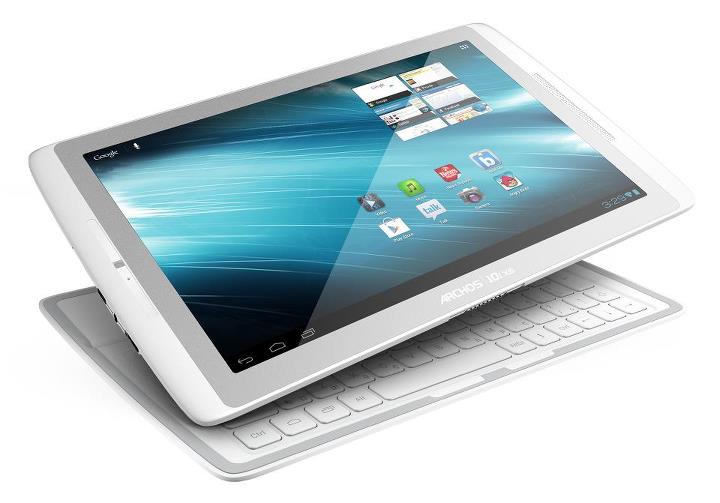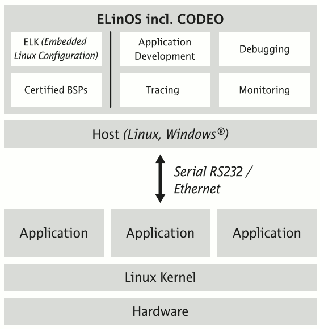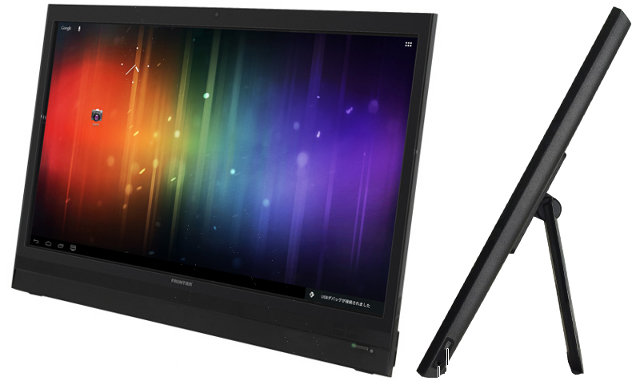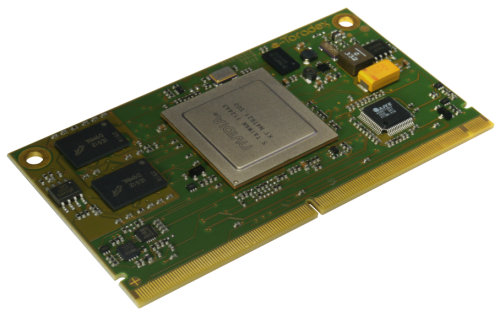Linaro release 12.09 has just been announced, and includes Linux Kernel 3.6-rc6 and Android Jelly Bean. This release provides further improvement to Android Jelly Bean, Android benchmark characterization, an ARMv8 OpenEmbedded image, UEFI bootloader support for Vexpress, origen and pandabords, and some improvement to big.LITTLE and power management. Here are the highlights of the release: Android All Linaro patches are now available on Jelly Bean. Accelerated graphics is now available on Snowball Jelly Bean build. AndEBench, AndEBench Java, Linpack, CaffeineMark, Antutu 2D and 3D, NBench, Quadrant, I/O Benchmark, Vellamo benchmark hotspot characterization available. An Origen tracking build is available and will be released this cycle as a Linaro Evaluation Build (LEB). Audio works on Origen running Jelly Bean (WAV file only). A Monkeyrunner script to run Streamline has been completed. First rev of the NI PXIe-4154 based power measurement system is created. See http://www.youtube.com/watch?v=9bKyuxLl4iw&feature=plcp In-tree AOSP tests have been automated. […]
Linaro 12.08 Release with Kernel 3.6 and Android 4.1.1 Jelly Bean
Linaro release 12.08 includes Linux Kernel 3.6-rc2 and is the very first release with Android Jelly Bean (4.1.1-R4). The Android platform team has managed to port Android Jelly Bean to all their main development platforms: Versatile Express, Versatile Express RTSM, Samsung Origen, TI PandaBoard, ST Ericsson Snowball, as well as Samsung Galaxy Nexus smartphone. They’ve also added TINY_ANDROID, a minimal Android build that can be used for kernel development, toolchain work and other development where users only need a console. It’s possible to get the source code, build it and access the shell within 10 minutes. U-boot-Linaro has been updated and is now based on the latest upstream release v2012.07. Next month, we might be able to see a preliminary port of Android on 64-bit platform (ARMv8). Here are the highlights of the release: Android Automated Methanol (http://gitorious.org/methanol) browser benchmarking in Linaro Android. Automated over 100 Jelly Bean AOSP tests. […]
Archos Unveils 101 XS Tablet Powered by TI OMAP4470
After teasing us last March, Archos officially launched their new Gen10 XS tablet line, and specifically announced the Archos 101 XS, a 10.1-inch Android 4.0.3 tablet powered by Texas Instruments OMAP4470 (Dual core Cortex A9) @ 1.5 GHz that features a detachable magnetic keyboard called the CoverBoard which also serves as a protective cover when not in use. Here are the specs for this new tablet: Processor Texas Instruments OMAP4470 @ 1.5GHz with SGX544 GPU Storage 16 GB Flash Memory + microSD Slot (up to 128GB) System Memory 1GB RAM Video codecs and containers • H.264 HD ([email protected], up to 1080p@30 fps and 1080i/720p@60 fps) • MPEG-42 HD (SP/ASP@L6, up to 1080p@30 fps) • With optional plug-in: MPEG2 HD (MP/HL, 1080p@30 fps) • With the above codecs, the device can play video files with the following extensions: AVI, MP4, MOV, 3GP, MPG, PS, TS, VOB, MKV, FLV, RM, RMVB, ASF […]
SYSGO Releases ELinOS 5.2 Industrial Grade Linux
SYSGO, a software company for the real-time and embedded markets, has announced the release of ELinOS 5.2, an Industrial Grade Linux distribution, updated to kernel 3.2 and with new features related to scheduling, memory management, file systems, networking and security. The new 5.2 version brings the following improvements: Integration of new kernel 3.2 to support new features and availability of previous versions of kernels 2.6.33 and 2.6.34, to respond to customers demand. Real-time extension based on Open Source Automation Development Lab (OSADL) implementation (PREEMPT RT) especially designed and tested for industrial needs. Support for latest embedded CPUs including Intel, Freescale QorIQ, ARM Cortex, TI OMAP 4, Freescale i.MX6 and MIPS. SMP (Symmetric multiprocessing) support on all multi-core platforms. QEMU simulator supported for all architectures. New functionality support in areas of graphics (i.e. AMD Llano Fusion APUs), Wi-Fi (i.e. Intel iwlwifi 105 and 135), SATA (i.e. Intel C600 serial-attached-scsi controller), USB […]
Instructions to Build Android Jelly Bean on Pandaboard and Origen Boards
About 2 weeks ago, Linaro showed Android Jelly Bean running on Origen board with hardware accelerated, and last week they provided instruction to build Jelly Bean for the Pandaboard (OMAP4430) and the Origen board (Exynos 4212). Android Jelly Bean for Pandaboard: Pre-build Image and Build Instructions The fastest way to try Android Jelly Bean on the Pandaboard is to download the latest binaries available at https://android-build.linaro.org/builds/~linaro-android/panda-jb-gcc47-tilt-stable-blob in a PC running Ubuntu. For example (12/08/2012): wget http://snapshots.linaro.org/android/~linaro-android/panda-jb-gcc47-tilt-stable-blob/24/target/product/pandaboard/system.tar.bz2 wget http://snapshots.linaro.org/android/~linaro-android/panda-jb-gcc47-tilt-stable-blob/24/target/product/pandaboard/boot.tar.bz2 wget http://snapshots.linaro.org/android/~linaro-android/panda-jb-gcc47-tilt-stable-blob/24/target/product/pandaboard/userdata.tar.bz2 Install linaro-image tools: sudo add-apt-repository ppa:linaro-maintainers/tools sudo apt-get update sudo apt-get install linaro-image-tools Insert an SD card, make sure it is not mounted and flash it with the firmware (Replace /dev/sdc by the corresponding drive in your system): ./linaro-image-tools/linaro-android-media-create –mmc /dev/sdc –dev panda –system system.tar.bz2 –userdata userdata.tar.bz2 –boot boot.tar.bz2 Finally install the graphics libraries: wget http://people.linaro.org/~vishalbhoj/install-binaries-4.0.4.sh chmod a+x install-binaries-4.0.4.sh ./install-binaries-4.0.4.sh Remove the SD card from your PC, and insert it […]
Linaro 12.07 Release with Kernel 3.5 and Android 4.0.4
Linaro has released version 12.07 based on Linux Kernel 3.5-rc3 and Android 4.0.4. Some work has been done on Jelly Bean (but the port is for next month), several benchmark tools have been added to LAVA as Linaro wants to provide standard benchmarks for Android, Linaro ALIP image now uses LXDE by default with a smaller image and improved performance, and Open Embedded images are now available (minimal and LAMP stack). Here are the highlights of the release: Android Jellybean baselines for Galaxy and Panda with Linaro extra’s available Android Benchmarking apps were deployed for pandaboard, snowball and origen in LAVA including: vellamo, quadrant, nbench, linpack, glbenchmark, geekbench, caffeinemark, antutu, andebench Improved native Benchmarks variance on Android to 1%, working on Java variance ICS “tests” builds now produced by default and test lists generated Open overlay tarballs working pm-qa’s cpuidle cpufreq cpuhotplug sched_mc suspend integrated into the Android builds Linaro […]
Frontier FT103 21.5″ Android SmartDisplay
Frontier, a Japanese company, launched a 21.5″ Smartdisplay running Android 4.0 powered by Texas Instruments OMAP4428 application processor with 1 GB RAM and 8 GB Flash. Here are the specifications of this giant Android tablet: Processor – Texas Instruments OMAP 4428 dual core Cortex A9 @ 1 GHz System memory – 1 GB Storage – 8 GB Flash + SD card slot (Up to 32 GB) Display – 21.5″ TFT LCD touch panel (maximum resolution: 1920 x 1080) USB – microUSB (stereo mini jack) USB2.0 + 2x USB 2.0 Host ports. Audio I/O – Built-in Microphone, built-in stereo speakers (1W + 1W) and headphone jack. Connectivity 10/100 MBit Ethernet Wifi 802.11 b/g/n Bluetooth ® Ver.2.1 + EDR Camera – 1.2 MP Webcam Power Supply – AC adapter (19V, 2.1A) Dimensions – 512.8 x 353 x 24.8 mm Weight – 5.0 kg The company does not expect you to carry this […]
Toradex Releases Apalis Computer on Module Architecture Specification
Last month, Toradex released the preliminary specification for Apalis, a Computer on Module (CoM) architecture. Although the Apalis specification has been initially designed with ARM based processors in mind such as the Nvidia Tegra, Freescale i.MX and Texas Instruments OMAP processor families, it aims at being device and chip architecture independent. The Apallis specification defines the following: Interface Specifications: Signal Naming Convention – Rules to name pins (e.g. VCC, PWM1, PWM2, ) which are used for all modules. Signal Definition – Details about the pins named above Physical Pin Definition and Location Mechanical Specifications: Mounting and Fixation Module Size – Standard: 82 x 45mm | Extended: 82 x 56mm Pin Numbering – There is a total of 321 pin numbers (but a few less actually pins) Electrical Specifications: Power Supplies Power Control Back Feed Protection This specifications also defines mounting mechanisms for active cooling (e.g. heat spreaders) in case those […]








